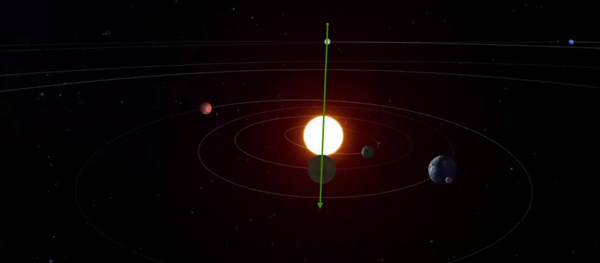A group of astronomers at the National Astronomical Observatory of Japan has managed to find the first evidence for the existence of a planetesimal in the asteroid belt beyond Neptune's orbit (the Kuiper belt) — a small body with a 1.3 km radius at the edge of our solar system, which essentially predates the formation of a protoplanet, according to the existing theory. This planetesimal orbits the sun at a distance of around 32 astronomical units, which is equal to 4.787 billion kilometres.
The discovery finally provides grounds for the planetesimal hypothesis proposed by Soviet astronomer Viktor Safronov, which laid the basis for the mainstream theory of planet formation. According to the theory, small objects in asteroid belts known as planetesimals can start accumulating space dust and other small objects on their surface, gradually gaining mass, gravity, which eventually heats up its core, essentially turning it into a protoplanet.
Although the hypothesis was laid out in 1969, no evidence for the existence of such planetesimals has been found before now, as the objects are extremely small and dim, thus hardly detectable by telescope, as they reflect very little of the Sun's light. The Japanese team instead used the occultation method, waiting for one of the planetesimals to block part of the light emission from a star — somewhat similar to a solar eclipse.
READ MORE: NASA Reveals VIDEO of Probe's Close Flyby of Asteroid on Solar System's Edge
The National Astronomical Observatory of Japan, which doesn't boast a massive budget, was tracking the light emissions of some 2,000 stars using two telescopes for 60 hours until they finally detected what they were looking for.
"This is a real victory for little projects. Our team had less than 0.3 percent of the budget of large international projects. Yet we still managed to make a discovery that is impossible for the big projects", one of the astronomers, Ko Arimatsu, said.


